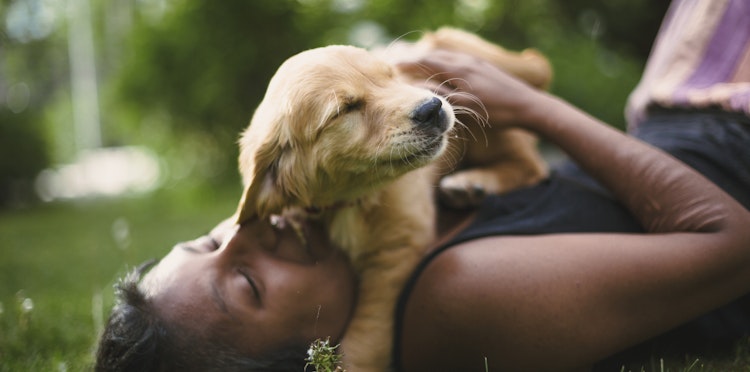How much should I feed my puppy?

Why do I need to buy puppy food?
When buying your puppy’s food, always check the label to make sure it is puppy rather than adult dog food as they are not formulated the same way. Puppy food is specially created to ensure that your puppy receives the right balance of nutrients that their growing bodies need.
A puppy’s diet should have a higher level of fats, protein and calories than an adult dog needs. Specially formulated puppy food also often contains extra nutrients that would be found in the mother’s milk, such as Omega Fatty Acid DHA.
Puppy feeding routine
Your puppy’s feeding routine will change as they grow. In the first few months, your puppy needs to eat little and often, so you will need to provide up to four meals a day of high-quality puppy food.
As your puppy begins to grow up, you’ll be able to reduce the frequency (but increase the quantity!) of meals, moving to three meals a day at around three to six months of age, then eventually moving to two meals a day as your puppy gets older. Use the feeding guide on the packaging to ensure you’re feeding the correct amount.
At around one-year-old, you’ll be able to move on to an adult dog food diet.
Establishing a feeding schedule
Once you’ve decided what puppy food you’re going to feed your puppy, you’ll need to start establishing some good feeding habits.
- Stick to the same feeding times each day
- Always feed your puppy in the same location
- Weigh out the food to make sure it’s the correct amount
- Leave the food down for a set time, perhaps 15 minutes, depending on how quickly your puppy eats
- This will also help establish regular toilet times for your puppy!
Healthy feeding tips
- Treats are a lovely extra for your dog and very helpful for training, but keep them in moderation and include the amount into your puppy’s total daily food requirements
- It’s best to avoid giving puppies bits of your own food – many common foods can be toxic to dogs
- Always make sure your puppy has access to fresh drinking water
- If you have any concerns about your puppy’s diet or weight always consult your vet for advice


